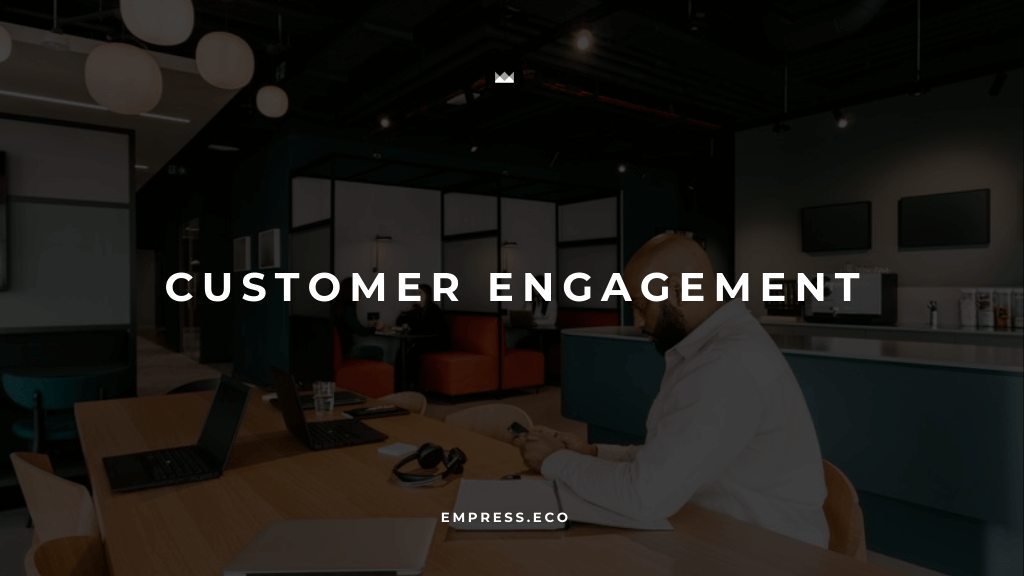
The Science of Customer Engagement
Techniques to Enhance Your Brand’s Aura
Table of Contents
Engaging your customers effectively is an art and a science. It involves understanding their needs, behaviors, and preferences and crafting experiences that resonate deeply with them. Let's delve into the techniques that can enhance your brand’s aura and foster lasting customer engagement.
1. Understand Your Audience Deeply
The foundation of customer engagement lies in knowing your audience inside out. This goes beyond basic demographics and dives into their behaviors, preferences, and pain points.
Action Steps:
- Customer Personas: Create detailed customer personas that represent different segments of your audience. Include information such as their goals, challenges, and buying behaviors.
- Surveys and Feedback: Regularly collect feedback through surveys, social media, and direct interactions. Use tools like SurveyMonkey or Google Forms to gather insights.
- Data Analysis: Leverage analytics tools to study customer behavior on your website and social media. Tools like Google Analytics and Facebook Insights provide valuable data.
By understanding your audience deeply, you can tailor your engagement strategies to meet their specific needs and preferences.
2. Personalize the Customer Experience
Personalization is key to making customers feel valued and understood. It involves tailoring your interactions and content to individual preferences and behaviors.
Action Steps:
- Segmentation: Divide your audience into segments based on characteristics like purchase history, behavior, and preferences. This allows for more targeted and relevant communication.
- Personalized Content: Use personalization tools to customize email content, product recommendations, and website experiences. Platforms like HubSpot and Mailchimp offer robust personalization features.
- Dynamic Content: Implement dynamic content on your website that changes based on the visitor’s behavior or profile. This can include personalized greetings, product suggestions, and content recommendations.
Personalization helps in creating a more meaningful and engaging experience for your customers, enhancing their connection to your brand.
3. Craft Compelling and Relevant Content
Content is a powerful tool for engagement. It should be informative, entertaining, and relevant to your audience’s interests and needs.
Action Steps:
- Content Calendar: Develop a content calendar to plan and organize your content. Include a mix of blog posts, videos, infographics, and social media updates.
- Educational Content: Create content that educates your audience on topics related to your industry. This positions your brand as a thought leader and provides value to your audience.
- Storytelling: Use storytelling techniques to make your content more engaging. Share customer success stories, behind-the-scenes looks, and narratives that highlight your brand’s mission and values.
Compelling content keeps your audience engaged and encourages them to interact with your brand regularly.
4. Leverage Social Media for Engagement
Social media platforms are essential for building relationships with your audience and fostering engagement.
Action Steps:
- Active Presence: Maintain an active presence on the social media platforms where your audience spends their time. Post regularly and engage with comments and messages promptly.
- Interactive Content: Use polls, quizzes, and live videos to create interactive experiences. Platforms like Instagram and Facebook offer various interactive features.
- Community Building: Create and nurture communities around your brand. This could be through Facebook Groups, LinkedIn Groups, or even dedicated hashtags on Instagram and Twitter.
Social media allows for direct interaction with your audience, making it a vital tool for enhancing customer engagement.
5. Implement a Seamless Omnichannel Experience
Customers interact with brands across multiple channels, and providing a seamless experience across all touchpoints is crucial.
Action Steps:
- Consistent Messaging: Ensure that your brand messaging is consistent across all channels. This includes your website, social media, email, and in-store experiences.
- Integrated Systems: Use integrated systems to unify customer data from different channels. This provides a holistic view of the customer journey and helps in delivering a cohesive experience.
- Responsive Design: Ensure your website and emails are optimized for all devices. A responsive design improves user experience and engagement on mobile devices.
An omnichannel approach ensures that customers have a consistent and enjoyable experience with your brand, no matter where they interact.
6. Foster Community and Loyalty
Building a community around your brand and fostering loyalty can significantly enhance customer engagement.
Action Steps:
- Loyalty Programs: Implement loyalty programs that reward customers for their repeat business. This could include discounts, exclusive offers, and early access to new products.
- Customer Advocacy: Encourage satisfied customers to become brand advocates. This can be through referral programs, testimonials, and user-generated content.
- Engagement Events: Host events, both online and offline, to engage with your community. This could be webinars, workshops, or meet-and-greet sessions.
Fostering a sense of community and loyalty helps in building long-term relationships with your customers.
7. Measure and Optimize Engagement
To continuously improve customer engagement, it’s essential to measure your efforts and optimize based on the insights.
Action Steps:
- Key Metrics: Identify key metrics to track, such as engagement rate, click-through rate, conversion rate, and customer satisfaction scores.
- Analytics Tools: Use analytics tools to gather data on your engagement efforts. Google Analytics, social media insights, and CRM systems provide valuable information.
- A/B Testing: Regularly perform A/B tests to see what works best. Test different content formats, messaging, and engagement strategies to find the most effective approaches.
By measuring and optimizing your engagement strategies, you can ensure continuous improvement and better results.
Conclusion
Mastering the science of customer engagement involves a combination of understanding your audience, personalizing experiences, crafting compelling content, leveraging social media, implementing an omnichannel approach, fostering community and loyalty, and continuously measuring and optimizing your efforts. By applying these techniques, you can enhance your brand’s aura and build lasting relationships with your customers.
Start implementing these strategies today to elevate your customer engagement and ensure your brand shines brightly in the marketplace.
Empress Newsletter
Join the newsletter to receive the latest updates in your inbox.



